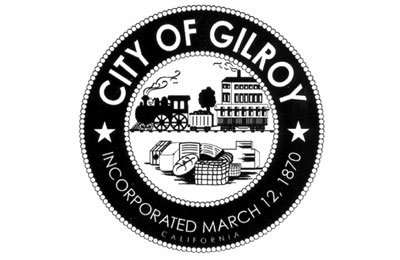There’s a lot to cover at Monday night’s city council meeting,
from housing policies to a whopping $790,000 bid for improvements
at Christmas Hill Park. Here’s a look at some issues the body will
begin discussing at 6 p.m. at City Hall, 7351 Rosanna St.
There’s a lot to cover at Monday night’s city council meeting, from housing policies to a whopping $790,000 bid for improvements at Christmas Hill Park. Here’s a look at some issues the body will begin discussing at 6 p.m. at City Hall, 7351 Rosanna St.
Housing Policies
With the housing market still on the outs, developers are clinging to their coveted building rights waiting for the right time to build. But the city council allocated those rights in 2001 and again last fall with the expectation that houses would be up by now with the fees rolling in. The cash-strapped school district also needs money from new home construction to pay off debt obligations, but the standstill has everyone wondering how to get things moving again and what might happen when the market recovers.
What the council will discuss Monday night is the process by which the body allocates a finite number of housing units to developers and the possibility of more strictly enforcing the construction time frames for those units. So far the allocation process “has not met the objectives of providing a variety of housing types throughout the community, achieving affordable housing goals, and integrating … schools, parks, and community gathering places into all residential areas,” according to a memo the city’s planning department sent to City Administrator Tom Haglund earlier this week.
To address this problem, the council approved so-called “neighborhood districts” when it passed the city’s long-term General Plan in 2002. But another problem has since emerged: These districts envision thousands more housing units than the council can allocate under the city’s current growth limitations, and building all five neighborhood districts will take until 2034, 14 years after the original target date, according to staff calculations.
The plan’s there, but council members have said fulfillment is the issue. The city’s major developers, who have contributed the vast majority of fees to Gilroy’s coffers, are expected to tell the council what should be expected of them given housing conditions. Staff has also recommended joint study sessions with the council and Planning Commission to begin hammering things out.
Claims
Two weeks after the city council settled a personal injury lawsuit stemming from a broken sidewalk for $35,000, the council will consider four claims for property damage caused by falling limbs from city trees. The separate claims for damages were filed with the city between June 16 and Aug. 13 and total nearly $7,500.
Broke loan fund
Just three months into the fiscal year and the city’s $325,000 loan program for first-time home buyers is broke. A dozen buyers have taken advantage of the city’s deferred loan program as market rate homes continue to decline in price. The money has helped 12 home buyers reach their down payments since July 1, some of whom bought foreclosed homes, according to Housing and Community Development Grants Coordinator Marilyn Roaf.
“What appears to be happening is because market prices have gone down so much, the subsidy that the city offers is now enough for people to be able to afford those houses. In the past, that subsidy was not high enough to buy most houses on market, so buyers had to come up with other sources of assistance,” Roaf said.
Only four people borrowed from the city last year, and according to the program’s guidelines, the home sales price cannot not exceed 120 percent of the monthly median home sales price for Gilroy, which was $425,000 in August. That means no homes more than $510,000.
Low-income buyers can receive up to $50,000; those of moderate income up to $30,000; and if the home is newer, the city decreases the amount accordingly. Low income means earning less than $59,400 for a single person and less than $84,900 for a family of four. Moderate incomes translates to less than $88,600 for a single and $126,600 for a family of four.
Applicants cannot have owned property within three years and must have lived in Gilroy for at least one year – unless the applicant is a city or school district employee – and they have to acquire an approval letter from a credited lender and take a first-time home buyer training course before paying $275 in application filing fees.
The money comes from the city’s Housing Trust Fund, which derives its cash from previous loan payment, a share in any profit a seller makes from selling a below-market home and interest. No grant money subsidizes the fund, but the city did receive $1.5 million in state money for home ownership loans at South County Housing’s downtown affordable housing project Alexander Place. The project is the second phase of the nonprofit’s Cannery Project, but no buyers have come to the city for loans to live there, Roaf said.
Reacting to the loan program’s popularity this year, Roaf said, “It’s a good thing because it seems that it’s been well used, and it has served its function of getting people into homes.”
$790,000 for Christmas Hill Park
The council recently agreed to pay for 100 percent of sidewalk repairs, and one way to cover the multi-million undertaking would be to defer future projects such as the $790,000 worth of improvements slated for Christmas Hill Park.
The council will consider authorizing the expense of this money Monday. Staff has recommended that of 11 bidders, Clovis-based Elite Landscaping should receive the contract to improve the 60-year-old park.
Some of the improvements include:
– Extending several sidewalks
– Repairing the parking lot and restoring historic picnic tables
– Installing metal shade structures and new picnic tables
– Installing barbecue and trash receptacles
– An overall rehabilitation of the Mulberry Picnic area
The city has nearly $1.5 million set aside for these and other Christmas Hill Park-related improvements.
Library lawyer
If voters pass a $37 million bond measure for a new library next month, the city will need to hire a bond counsel to give its legal opinion that the city is authorized to issue such bonds. Staff has recommended the law firm of Jones Hall, which counseled the city during the purchase of Gilroy Gardens and the funding of the new police station, the Sunrise fire station, the sports park and the improvements to the city’s corporation yard.
If the library bond passes, the city will pay Jones Hall up to $60,625 if the city issues the full amount of $37 million. The city will also reimburse the firm for all out-of-pocket expenses.
Prop 7
The council will also hear a presentation by the “No on Proposition 7 Campaign,” but the body is not scheduled to register its collective opinion on the issue, which some argue could actually hurt small alternative energy business instead of help them.
Proposition 7, one of two alternative energy ballot measures, would require California utilities to generate half their electricity from windmills, solar systems, geothermal resources and other renewable sources by 2025.
If voters approve it, the initiative would solidify California’s position as having the country’s most aggressive renewable energy mandate.
“It does what all the climatologists are telling us we must do for life on this planet to survive,” said S. David Freeman, who once headed the agency that oversees California’s power grid. “It accelerates the pace to get carbon gases out of the atmosphere.”
Placed on the ballot by Arizona billionaire Peter Sperling, the measure has put Democrats, environmentalists and the renewable industry in the awkward position of fighting a measure that would advance their agendas.
They say the initiative would shut out small renewable projects, drive up electricity prices and make it easier for utilities to shirk their obligations.
California’s largest utilities have raised nearly $28 million to defeat it. The California Public Utilities Commission voted earlier this month to oppose it, saying it would create an “excessively rigid, and potentially unworkable structure” for future renewable energy development in the state.
The lesser known Proposition 10 would give Californians who buy alternative-fuel vehicles up to $50,000 through a $5 billion bond measure. It also would pay for research, development and production of renewable energy and alternative-fuel vehicle technologies.
One of the biggest disputes of Proposition 7 is what kind of clean energy projects would be counted toward the new state target.
Critics say the initiative would exclude all projects that produce less than 30 megawatts of electricity. That would include rooftop solar panels on stores, small hydroelectric dams, biomass plants that burn farm waste and other small projects that account for nearly two-thirds of California’s renewable energy sources.
If those projects don’t count toward the target, there will be no incentive for utilities to reward businesses and homeowners who want to generate their own power, said Gerber, founder of Sun Light & Power Co., which installs solar panels on commercial buildings in the San Francisco Bay area.
“The core of what I’m doing will go away,” Gerber said.
. . . To read the rest of this story, click here.















